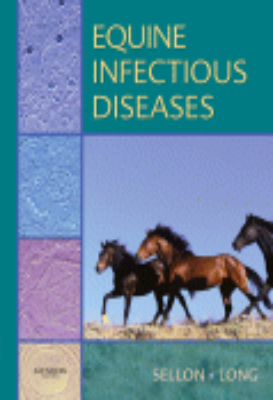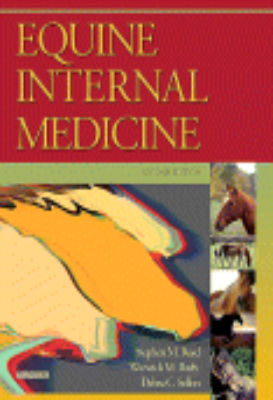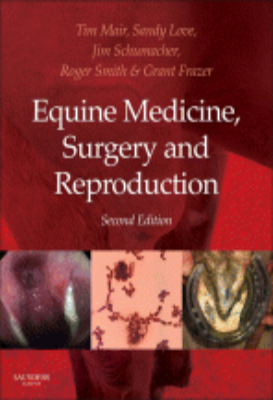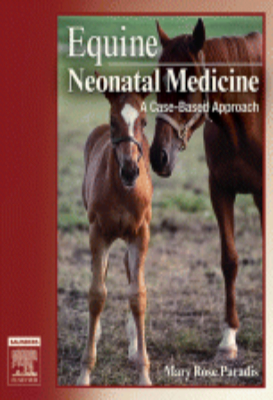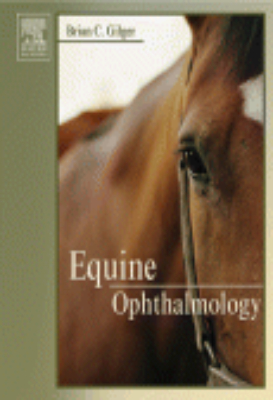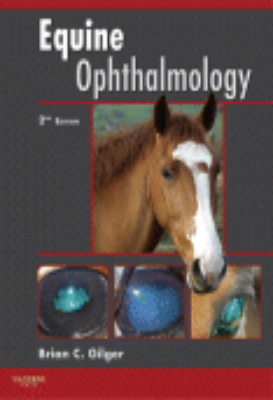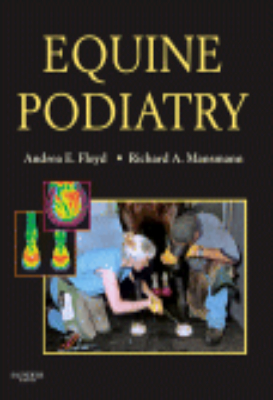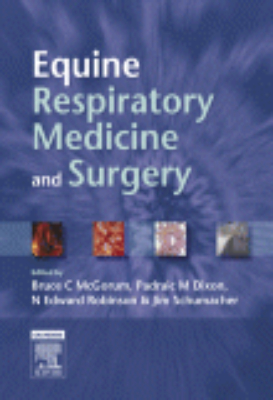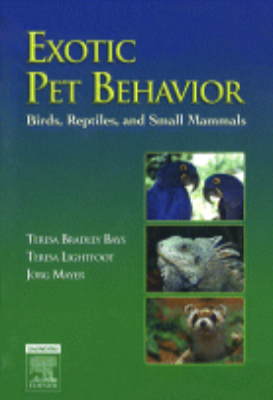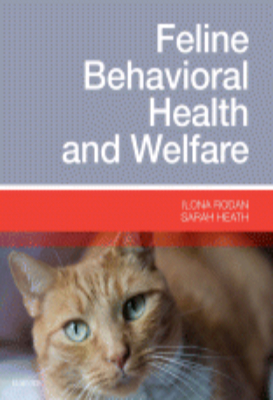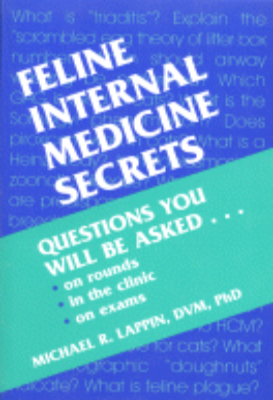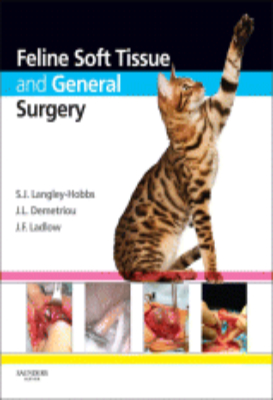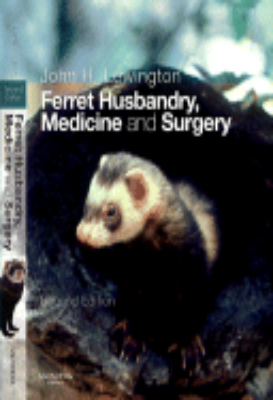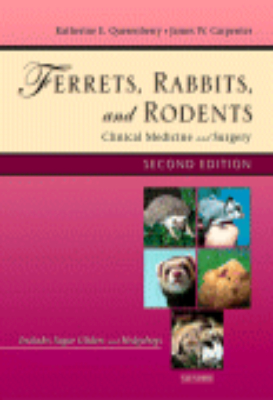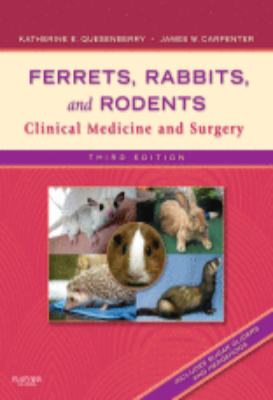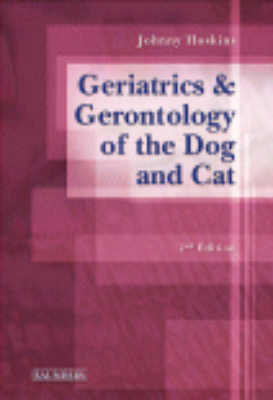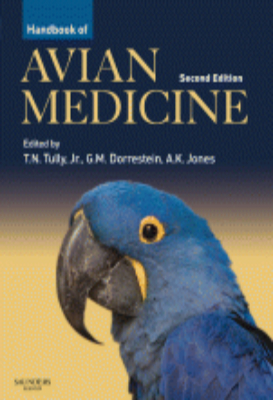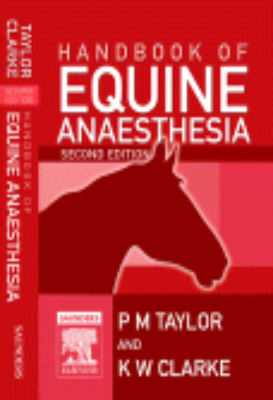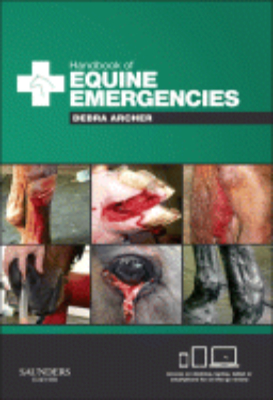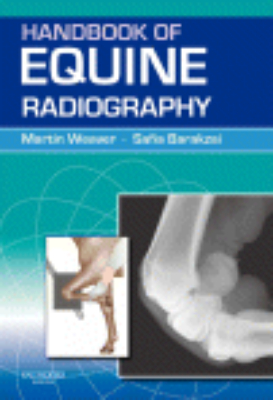E-Resources
Equine Exercise Physiology
Equine Exercise Physiology provides the most up-to-date, in-depth coverage of the basic sciences required for an understanding of the physiology of the equine athlete. This book provides a thorough grounding in the basic physiology of each body system and in particular the responses of each body system to exercise and training. It is the ideal resource for those interested in equine exercise physiology: undergraduate and post-graduate students in exercise science, comparative physiology, biology and veterinary science; veterinary students; horse trainers and owners of sport horses; journalists writing in equine specialty magazines; and interested lay persons.
Equine Geriatric Medicine and Surgery
Interest in equine geriatrics among veterinarians and researchers is on the rise as many horses remain active and rideable well into their twenties. However, as horses age, they develop certain condition that affect their overall health. Equine Geriatric Medicine and Surgery is a thorough and comprehensive text covering every aspect of veterinary management of the aging horse. The text covers many clinical topics like cardiology, dentistry, nutrition and more. Plus, there are a number of chapters devoted to the emotional challenges of caring the aging horse. Many of the conditions commonly associated with old age in the horse such as lameness, weight loss, or poor shedding actually might be treatable or preventable. Equine Geriatric Medicine and Surgery will help veterinarians manage their patients health, and the specially written laymans sections will help educate owners about preventive measures that can be taken to extend the life of their animals.
Equine Infectious Diseases: 2007
Ideal for both practitioners and students, this comprehensive resource covers the diagnosis, treatment, and prevention of infectious disease in horses. Organized by infectious agent virus, bacterial and rickettsial, protazoal, and fungal it includes complete coverage of the individual diseases caused by each type of agent. A section on clinical problems examines conditions such as ocular infections, CNS infections, and skin infections. It also addresses the importance of preventing and controlling infectious disease outbreaks with coverage of epidemiology, biosecurity, antimicrobial therapy, and recognizing foreign equine diseases.
Equine Infectious Diseases: 2014
Ideal for both practitioners and students, Equine Infectious Diseases, 2nd Edition covers the diagnosis, treatment, and prevention of infectious disease in horses. Organized by infectious agent viral, bacterial and rickettsial, protozoal, and fungal it includes complete coverage of the individual diseases caused by each type of agent. A section on clinical problems offers effective treatment for conditions such as ocular infections, CNS infections, and skin infections. Preventing and controlling infectious disease outbreaks is addressed with information on epidemiology, biosecurity, antimicrobial therapy, and recognizing foreign equine diseases.
Equine Internal Medicine
This is the only equine book on the market devoted solely to internal medicine. This problem-oriented book is organised into two primary sections. Part 1 is problem-based focusing on the mechanisms underlying disease and the principles underlying treatment. Part 2 is a body systems approach to common problems. Here individual diseases are discussed in terms of anatomy and physiology, pathophysiology, clinical signs, diagnosis, and treatment. There are special and timely chapters on critical care, diseases of foals, and epidemiology.
Equine Medicine Surgery and Reproduction
The new edition of this introductory-level textbook continues to offer a concise and approachable bridge between student lecture notes and more detailed clinical reference works. All aspects of equine medicine, surgery and reproduction are covered in a single, convenient volume. The second edition has been subject to an extensive revision, with each chapter updated and new chapters added to cover wound management, critical care, anaesthesia and sedation, and diagnostic imaging. While offering key information in an easily and quickly digested format for clinical veterinary students and practising veterinary surgeons, this second edition of Equine Medicine, Surgery and Reproduction will also be relevant to students undertaking equine science degrees, and to professional horse owners and trainers. The wide range of international contributors, highly experienced and all experts in their fields, ensures that the new edition of this popular all-in-one resource remains as indispensable as ever.
Equine Neonatal Medicine
Get expert insight into the latest life-saving techniques and procedures from leaders in equine neonatal medicine. This outstanding textbook and clinical reference takes a case-based approach to the basic pathophysiology, diagnosis, and treatment of disease in the newborn foal, along with neonatal pharmacology, nutrition, assessment, and high-risk pregnancies.
Equine Ophthalmology: 2005
This comprehensive text covers the diagnosis, treatment, and surgery of ocular disorders in horses. The content provides a complete guide to the diagnosis and treatment of equine ocular disorders. With contributions from 21 equine experts from all over the world, this resource is truly all-inclusive. Each chapter features multiple figures, diagrams, tables, and individual disease sections that are organized to assist readers who need a quick reference. The practical nature of the book makes it ideal for equine practitioners, veterinary students, ophthalmology residents, and veterinary ophthalmologists.
Equine Ophthalmology: 2011
With contributions from 18 of the world's leading equine experts, Equine Ophthalmology provides the comprehensive and authoritative coverage you need to diagnose, manage, and operate on ocular disorders in horses. Detailed illustrations facilitate the accurate identification of a wide range of ocular diseases, while up-to-date and easily accessible clinical information helps you decide on the best course of treatment.
Equine Podiatry
This comprehensive text not only covers basic principles of horseshoeing, but also focuses on medical and surgical foot care management. Starting with the anatomy and physiology of the equine foot, this one-of-a-kind book then evaluates the foot, its pathological conditions (including structural, developmental, and traumatic conditions in addition to laminitis), balancing and shoeing the healthy and diseased equine hoof, and ends with a chapter on new directions in equine podiatry, written by cutting-edge researchers in the field.
Equine Respiratory Medicine and Surgery
Equine Respiratory Medicine and Surgery provides the most up-to-date, in-depth coverage of the basic and clinical sciences required for management of respiratory disorders in the horse. The book provides a thorough grounding in respiratory physiology, examination techniques, and reviews each of the medical and surgical problems that may be encountered, organised anatomically and progressing in logical fashion from the upper airways, larynx and sinuses, through to the lower airways, the lungs and diaphragm. The text encompasses investigation and diagnosis of each of the common types of problem, including infections, allergy, trauma, cysts and tumours, and provides comprehensive guidance on both medical and surgical management.Key features include: High quality artwork, including relevant radiographic, ultrasonographic, CAT scan, and MRI images, to aid understanding and diagnosis/ integrated colour photographs throughout A truly international perspective A lucid, accessible pedagogic style to aid rapid reference The highly respected editors have brought together an internationally renowned team of contributors, producing the ultimate reference for veterinarians, students, and professional horse-owners.
Equine Sports Medicine and Surgery: 2004
Equine Sports Medicine and Surgery provides the most up-to-date, in-depth coverage of the basic and clinical sciences required for management of the equine athlete. The unique treatment of exercise physiology and training within a clinical context, together with detailed review of all diseases affecting athletic horses, makes this the most comprehensive text available.The book will provide a thorough grounding in the basic physiology of each body system, and in particular the responses of each body system to exercise and training, that will be separate, but highly relevant to, the succeeding sections on clinical disorders of each body system. The highly respected editors have brought together an internationally renowned team of 50 contributors, producing the ultimate reference for veterinarians, students, horse-owners, and all those involved in the world of equine athletics.
Equine Sports Medicine and Surgery: 2014
This unique resource provides the most up-to-date, in-depth coverage of the basic and clinical sciences required for management of the equine athlete. The unique treatment of exercise physiology and training within a clinical context, together with a detailed review of all diseases affecting athletic horses, makes this the most comprehensive text available. Provides a thorough grounding in the basic physiology of each body system, and in particular the responses of each body system to exercise and training. The internationally renowned team of contributors has created the ultimate reference for veterinarians, students, horse-owners, and all those involved in the world of equine athletics. "a signicant amount of practical information for use in the eld, as well as providing a sound scientic basis for therapy and understanding of the underlying pathology of the horse as an athlete."Reviewed by: John Bowers on behalf of Australian Veterinary Journal, May 2015
Equine Surgery: 2006
The most comprehensive text available on equine surgery, this book prepares the veterinary surgeon for managing each surgical condition by understanding its pathophysiology and evaluating alternative surgical approaches. Explanations describe how to avoid surgical infections, select and use instruments, and perfect fundamental surgical techniques including incisions, cautery, retractions, irrigation, surgical suction, wound closure, dressings, bandages, and casts.
Equine Surgery: 2012
The most comprehensive reference available on equine surgery, this book prepares the veterinary surgeon for managing each surgical condition by understanding its pathophysiology and evaluating alternative surgical approaches. Explanations describe how to avoid surgical infections, select and use instruments, and perfect fundamental surgical techniques including incisions, cautery, retractions, irrigation, surgical suction, wound closure, dressings, bandages, and casts.
Exotic Pet Behavior
In addition to coverage of all normal behavior patterns -- sensory, communication, social and antisocial, reproductive, eating, and elimination -- this resource helps you identify medical implications of abnormal behavior, pain-associated behaviors, and effects of captivity. Client education handouts provide important information about caring for a variety of avian and exotic pets.
Feline Behavior
The new edition of this popular book covers all common behavior problems pertaining to the cat including the history of feline development to social and communicative behavior. The easily accessible format makes this an excellent book for both professionals and pet owners. Important areas of discussion are the cat's behavior and its changing role for humans, and the inclusion of new treatments as additional information is learned about cat behavior.
Feline Behavioral Health and Welfare
Learn to manage the physical and psychological well-being of your feline patients with Feline Behavioral Medicine: Prevention and Treatment. From house soiling problems to aggression, this all-new reference offers detailed guidance on assessing, treating, and preventing the full spectrum of feline behavioral problems. Material is organized by both topic and life stage for quick access to the information you need. Plus its incorporation of patient education materials, instructive images, and the latest AAFP guidelines, makes it an invaluable addition to any vet clinicians library. "This book ... will undoubtedly become THE reference in that very specific field." Reviewed by: Fabienne Dethioux on behalf of Royal Canin: Vets Today, January 2016
Feline Internal Medicine Secrets
This book covers the breadth of feline diagnoses and management in the textbook-in-question-and-answer format for the Secrets series. After years of being treated under the basic medical model of the canine, feline medicine has reached greater prominence in the past few years, and has become a hot topic in veterinary medicine. Michael Lappin is one of the major names in modern feline medicine and he has assembled a cast of contributors featuring many of the major feline authorities in veterinary medicine. Each chapter presents a brief overview, discusses the diagnotic plan and then focuses on the key concepts for each topic.
Feline Orthopedic Surgery and Musculoskeletal Disease
Feline Orthopedic Surgery and Musculoskeletal Disease is the first book dedicated specifically to treating cats with disorders in this specific area. The practice of feline orthopedic surgery and traumatology has developed to a great extent over the last ten years as cat ownership is increasing and this textbook discusses new veterinary diagnostic procedures and surgical techniques that have been developed that veterinarians, residents and students working in the field of internal medicine need to know about.
Feline Soft Tissue and General Surgery
While the practice of feline general and oncologic surgery has developed greatly in recent years, the option of referral for some cat owners is not always a viable one. The increasing requirement for the general veterinarian to be competent in performing feline surgery has not, however, been supported by a dedicated text on the subject. Feline General and Oncological Surgery assembles an international team of editors and contributors to present the first comprehensive resource devoted solely to all aspects of soft-tissue surgeries in the cat. Techniques are covered in a practical and detailed how to manner and range from the common to the more specialized, ensuring the widest possible appeal. The book divides into several sections, initially considering the general approach to the feline surgery patient and then proceeding to detailed coverage of surgery by anatomic location. Part 1 deals with the basics of feline anesthesia, analgesia, preoperative and postoperative care of the patient, surgical instrumentation and surgical principles for oncology cases. Part 2 covers surgical techniques of general and oncological feline diseases and injuries, which are explained as step-by-step methods with many specially prepared schematic illustrations specific to the cat. Emphasis is on presenting both classical methods and new techniques. Feline Soft Tissue and General Surgery is the perfect sister-text to Feline Orthopedic Surgery and Musculoskeletal Disease, also published by Elsevier. Together they comprise a comprehensive and complete literature giving practial coverage of all possible surgical procedures in the cat.
Ferret Husbandry, Medicine and Surgery
Ferret Husbandry, Medicine and Surgery is a must-have for the small animal practitioner and those interested in ferrets in general. It aims to inform on all aspects and conditions relating to the domestic ferret. Edited and authored by one of the eminent authorities on ferrets in the world, John Lewington, for this new edition is joined by contributions - including both new text and illustrations - from ferret experts based in 8 different countries, including the UK, US, Australia, Japan and Russia, thus ensuring the most current and complete information is available on this increasingly popular animal. Fully updated and with full colour throughout, this second edition now has 5 new chapters: gastroenteric/liver diseases; ferret-polecat domestication and genetics; ferret dentistry and pathology; ferret toxicosis; and ferret ultrasonography, covering new radiology and ultrasound techniques.
Ferrets, Rabbits, and Rodents: 2004
Addresses the common questions and concerns of the practicing veterinarian who works with small mammals. Serves as a useful reference for veterinary students, technicians, research scientists, pet shop owners, pet owners, and breeders. Because preventive medicine is crucial to small mammal medicine, coverage includes basic biology, husbandry, and routine care of the healthy animal. Also features chapters on disease management, surgery, and radiology.
Ferrets, Rabbits, and Rodents: 2012
A concise guide to the care of small mammals, Ferrets, Rabbits, and Rodents: Clinical Medicine and Surgery covers the conditions seen most often in veterinary practice. The book emphasizes preventive medicine along with topics including disease management, ophthalmology, dentistry, and zoonosis. More than 400 illustrations demonstrate key concepts related to radiographic interpretation, relevant anatomy, and diagnostic, surgical, and therapeutic techniques. Now in full color, this edition adds coverage of more surgical procedures and expands coverage of zoonotic disease. From editors Katherine Quesenberry and James W. Carpenter, along with a team of expert contributors, the "Pink Book" provides an authoritative, single source of information that is hard to find elsewhere.
Furunculosis
Furunculosis: Multidisciplinary Fish Disease Research presents a fascinating insight into the opinions and the controversies which have led to current knowledge of this disease. It is the first book to cover one single fish disease by presenting not just the reviews, but also critical examination of the progress made by various disciplines. The multidisciplinary approach of the book makes it a valuable guide for veterinarians, fisheries biologists, and fish farm managers, as well as an excellent instructional text for students. The volume explores current research strategies and projects what developments can be expected in each field.
Geriatrics & Gerontology of the Dog and Cat
This groundbreaking reference is the first and only comprehensive book to address the needs of older dogs and cats, providing the veterinary clinician, veterinary student, and animal health technician with health-related information that is clinically relevant and quickly retrievable in a simple format. It offers a complete and practical review of the causes, incidence, clinical features, diagnosis, and management of both common and uncommon problems associated with the aging process and acquired illness. Each chapter offers tips on the physical examination of that body system and provides quick-reference tables for guidance on diagnosis and treatment. Because of the increased health problems in aging dogs and cats and the ardent attachment of the pet owner, veterinarians need to know more about aging so they may delay or minimize the progressive deterioration of aging and improve the quality of life for geriatric dogs and cats.
Handbook of Avian Medicine
This reference gives the small animal practitioner a complete information source for the basics of avian medicine and surgery. It pulls together the international expertise of the avian veterinary community by incorporating the knowledge of authors world-wide. The first six chapters cover the basic medical information needed to run a primary care avian practice. The focus here is on introductory level material and the average companion animal practice. If you see between one and five birds a week, this text is for you. The later chapters are species-specific and help the veterinarian in evaluating, treating, and/or referring various bird species. The new edition builds on the success of the first edition and includes full colour illustrations throughout.
Handbook of Equine Anaesthesia
The Handbook of Equine Anaesthesia continues to offer sound practical guidance on all aspects of sedation and anaesthesia in horses. It covers anaesthesia in a logical way from pre-anaesthetic preparation through to induction, maintenance, monitoring and recovery; as well as highlighting any problems and special situations. This second edition now devotes a new chapter to analgesia.As an easy reference book, it is designed for everyday use by the equine practitioner; from those who anaesthetise many horses daily under theatre conditions, to those who anaesthetise just a few a year. Moreover, Handbook of Equine Anaesthesia is useful for veterinary students, giving them a complete overview of equine anaesthesia.
Handbook of Equine Emergencies
The Handbook of Equine Emergencies is a concise, easy-to-follow practical guide to how to deal with a range of equine emergencies likely to be encountered by clinicians both in the UK and abroad. It is primarily aimed at new graduates and veterinarians who do not deal with equine emergencies on a regular basis, but will also appeal to more experienced equine practitioners who want a quick update on a specific subject area or practical technique. The Handbook is highly portable and contains a large number of colour images, diagrams and tables as well as handy tips and key points to remember. An overview of the basics of dealing with equine emergencies is followed by a convenient organ-based approach. The book includes invaluable information on infectious diseases and specialized emergency situations such as trapped horses or stable fires, and a how-to section gives concise but detailed descriptions of how to perform a number of diagnostic investigations. The Handbook is accompanied by a mobile-optimized website that presents audio, video and text files for quick reprisal via phone or tablet while on-the-go. The website also includes additional colour images that are relevant to specific emergency situations covered in the book.
Handbook of Equine Radiography
The Handbook of Equine Radiography is a practical and accessible "how-to" guide to obtaining high-quality radiographs of the horse. It covers all aspects of taking radiographs of the commonly examined regions (lower limbs and skull) as well as less frequently examined areas (upper limbs, trunk). The main part of the book consists of diagrams to illustrate the positioning of the horse and the radiography equipment. For each view a high-quality digital example of a normal radiograph is illustrated. The accompanying text for each radiographic view succinctly presents the most relevant aspects. Practically orientated, and including chapters covering such key areas as radiation safety in equine radiography and patient preparation, the Handbook of Equine Radiography is an indispensable guide to practitioners in all countries engaged in equine work.



